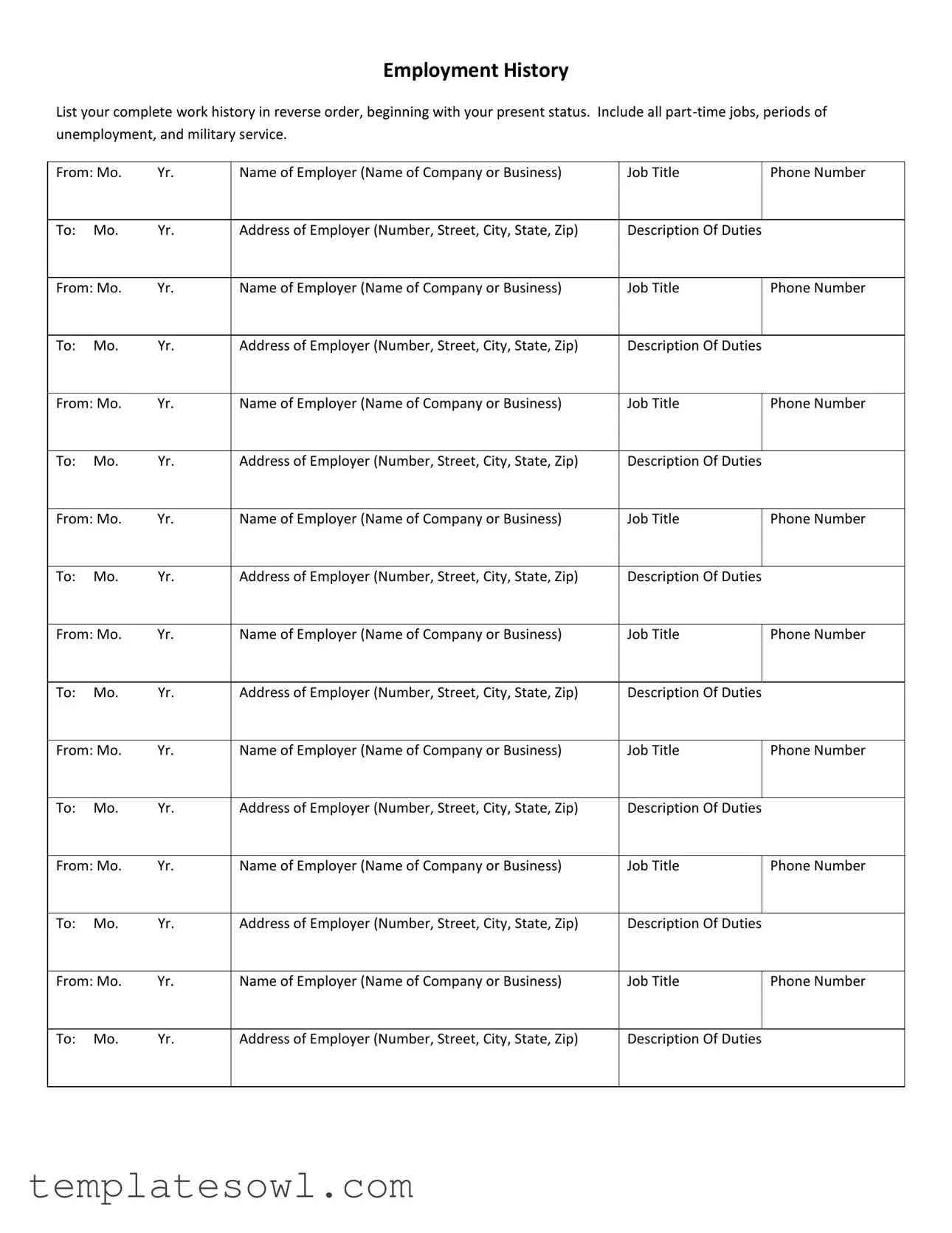What is the purpose of the Employment History form?
The Employment History form is designed to gather comprehensive details about your previous work experience. This information may be necessary for job applications, background checks, or verifications required by potential employers. It provides a complete picture of your work history, allowing employers to better assess your qualifications.
How should I fill out the Employment History form?
When filling out the form, list your work history in reverse chronological order, starting with your most recent job. Include every position you have held, even part-time jobs and periods of unemployment. If applicable, include military service as well. It is important to provide detailed job titles, employer names, addresses, phone numbers, and a description of your duties for each position.
What details are required for each employment entry?
For each job entry, you will need to provide the following: the dates of employment (from month and year to month and year), the name of the employer, your job title, and the employer's phone number. Additionally, you should include the address of the employer, and a brief description of your duties while employed there. This information helps establish your work experience and skills.
What if I have gaps in my employment history?
Gaps in employment history are not uncommon and should be disclosed transparently. If you have periods of unemployment, simply indicate those on the form, describing the duration. If possible, provide context for these gaps, such as personal reasons, education, or caregiving responsibilities, as this can help potential employers understand your situation.
Should I include part-time jobs on the Employment History form?
Yes, it is advisable to include part-time jobs as part of your employment history. Even if they were not your primary source of income, these positions can demonstrate skills, experience, and a work ethic relevant to potential employers. Listing all types of employment helps create a more comprehensive view of your work background.
Do I need to provide references for my previous employers?
The Employment History form does not specifically require references. However, providing references could be beneficial if the information is requested separately. It is typically recommended to have references ready to present if asked, especially from previous employers who can vouch for your skills and character.
What if I cannot remember specific details about my previous jobs?
If specific details are difficult to recall, focus on including as much information as you can accurately remember. Attempt to note approximate dates, employer names, and job titles. If possible, use online professional networking sites or previous employment records for assistance in reconstructing your history.
